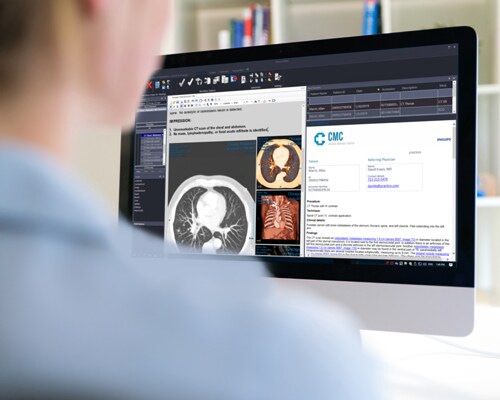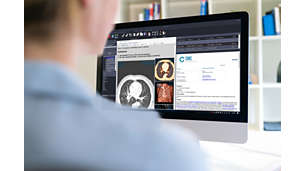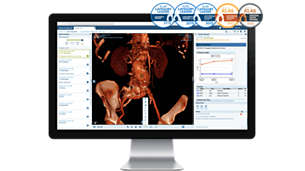Radiology Informatics
An enterprise imaging platform with one integrated radiology workflow
Featured solutions in Radiology Informatics

Structured and intuitive reporting for medical imaging informatics
Interactive multimedia reporting is a native module of the diagnostic workspace, helping radiologists to reduce report turnaround time.

Orchestrate a higher level of care through information technology
Provide the right study to the most qualified radiologist, based on areas of expertise, availability and workload in order to expedite reading and reporting, speeding time to treatment.

One radiology workspace for all in your clinical environment
A single workspace gives you relevant tools for confident reading and insightful reporting, supporting you in all steps of patient image data flow. Enjoy greater clinical insight with medical imaging, gaining access to 70+ applications across multiple healthcare domains, interactive multimedia reporting with voice recognition and an embedded digital mammography reading workflow to help improve patient care and aid in enhancing patient outcomes.

Harmonize imaging beyond departments with the help of information technology
Centralize your enterprise imaging repository to consolidate archives, lower costs and give providers unified access to the images and data they need to deliver better care using medical imaging informatics.

Real-time collaboration through medical imaging informatics
Have native chat and live screen-sharing between clinicians. With a single click, physicians can email a link to a medical imaging exam to colleagues across town or across the country to expedite second opinions.

Put the patient in the center with access to their biomedical informatics
Share imaging results between facilities, patients and physicians, enabling a collaborative healthcare workflow and empowering patients to control and manage their own electronic health records via a secure web-based portal.
Footnotes
Product may not be available in all geographies. Please check with your local Philips representative to ascertain the applicability of this solution for your region and language requirements. *AI-enabled solutions through Philips Advanced Visualization Workspace and third-party applications.










